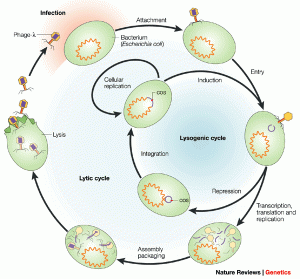Hello fellow writers,
Please find below my three definitions of the term “bacteriophage” which includes parenthetical, sentence and expanded definitions. The purpose of this exercise is to competently explain a semi-complex term to someone who may not be familiar with said term. I chose “bacteriophage” as I am currently studying virology and writing a paper on the use of bacteriophages in combating antibiotic resistant organisms. I look forward to receiving your comments and suggestions on how I can improve these definitions.
Bacteriophage: noun [bak-ˈtir-ē-ə-ˌfāj]
Parenthetical: The bacteriophage (a virus that infects bacteria) may prove to be useful in the fight against antibiotic resistant organisms.
Sentence: A bacteriophage is a virus that infects bacterial cells.
Expanded definition: Bacteriophages were discovered independently in 1915 and again in 1917 by Frederick Twort and Felix D’Herelle, respectively. The name is derived from the English, Bacterium and the Greek phagean, to eat. The number of Bacteriophages on the planet is far greater than the number of bacteria, with an estimated count of 1031. This amount of virus would weigh roughly the equivalent of 1 million blue whales.
A basic bacteriophage is composed of genetic material (DNA or RNA) enclosed in a protein shell called a capsid (head) with a tail and tail fibers protruding from the bottom of the phage. (fig. 1) They may have differently shaped capsids and different lengths of tails and tail fibers.

Bacteriophages infect their host cells by first binding to the surface of the host cell and then injecting their genetic material into the host cell. The virus can then undergo a lytic or a lysogenic lifecycle. (fig. 2)

In the lytic cycle the viral DNA is replicated, repackaged and the newly formed virions (virus particles) lyse, or destroy, the host cell in order to escape and continue the cycle of infection. The lysogenic cycle involves the viral DNA becoming incorporated into the host DNA. In this case, the bacterial cell is not destroyed, and the viral DNA is transcribed along with the host genetic material.
References:
Virtual Genetics Education Center. University of Leicester. https://www2.le.ac.uk/projects/vgec/highereducation/topics/microbial-genetics-1/bacteriophage. Accessed 15 January 2019
Acheson, Nicholas. Fundamentals of Molecular Virology. 2nd Ed. John Wiley & Sons Inc, 2011
Clokie, Martha Rj et al. “Phages in nature” Bacteriophage vol. 1,1 (2011): 31-45. https://www.ncbi.nlm.nih.gov/pmc/articles/PMC3109452/. Accessed 15 January 2019
Encyclopedia Britannica Editors. Bacteriophage. Encyclopedia Britannica, 12 Oct. 2018, https://www.britannica.com/science/bacteriophage. Accessed 15 January 2019.
Leave a Reply